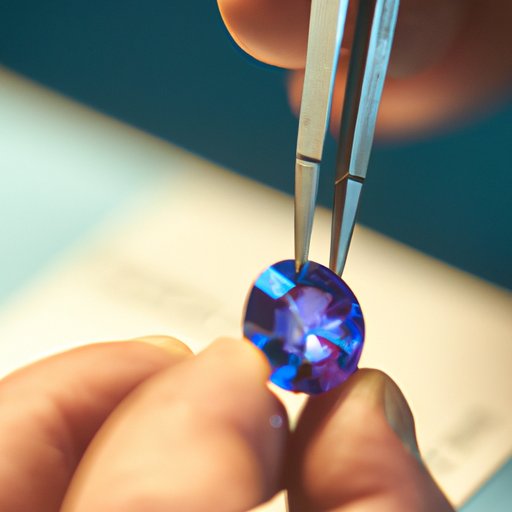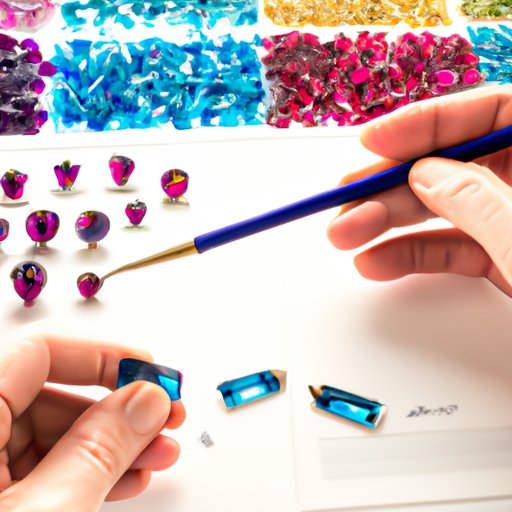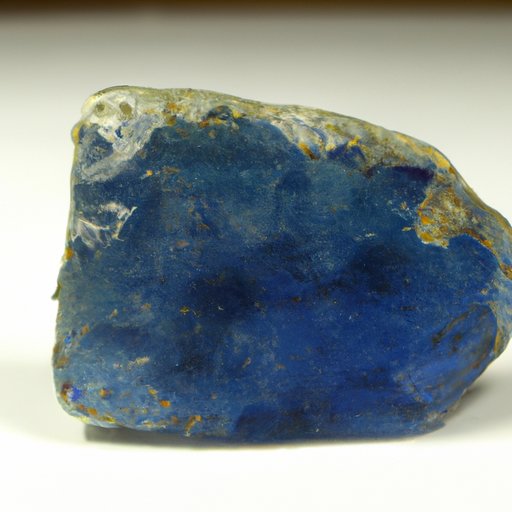Introduction
Sapphire is a precious gemstone that has been used by humans for centuries. It is a variety of corundum, a crystalline form of aluminum oxide (Al2O3). Sapphires come in a variety of colors, ranging from blue to pink, yellow, and green. This article will explore the mineral’s properties, uses, and history, including how it forms and what determines its value. We will also discuss the different varieties of sapphire and provide tips on how to care for this precious stone.
A Comprehensive Guide to Sapphire: Exploring the Mineral’s Properties, Uses, and History
Sapphire is one of the hardest minerals on earth, with a hardness rating of 9 on the Mohs scale. Its crystalline structure gives it an incredible amount of durability, making it ideal for use in jewelry and other decorative items. The mineral also has excellent heat-resistant properties, making it suitable for use in high-temperature applications such as watch crystals and laser components.
Sapphire is composed mainly of aluminum oxide (Al2O3) and traces of iron, titanium, chromium, vanadium, and magnesium. These elements give it its characteristic color, with blue being the most common hue. The hue can be altered by adding trace amounts of other elements, such as iron, titanium, or chromium.
Throughout history, sapphire has been used in many different ways. Ancient Egyptians used it to make beads and amulets, while ancient Greeks used it to make rings and other jewelry. In more modern times, sapphire has been used for watch crystals and laser components. It has also become an increasingly popular choice for engagement rings, due to its beauty and durability.

How Sapphires are Formed: Examining the Process Behind the Precious Gemstone
Sapphires are formed deep within the earth’s crust, under high temperatures and pressures. They are created when molten magma comes into contact with aluminum-rich rocks, such as gneiss, schist, and basalt. As the magma cools, it forms sapphires in a variety of shapes and sizes.
There are two main types of sapphires: natural and synthetic. Natural sapphires are mined from the ground, while synthetic sapphires are created in a laboratory. Both types of sapphires have the same properties and chemical composition, but natural sapphires tend to be more valuable due to their rarity.

The Value of a Sapphire: Understanding the Factors That Determine Price
The value of a sapphire is determined by several factors, including quality, rarity, and size. Quality refers to the clarity, color, and cut of the sapphire, with higher quality stones fetching higher prices. Rarity is another factor, as rarer stones tend to be more valuable. Size is also important, as larger stones tend to be more expensive than smaller ones.

The Colorful World of Sapphire: Investigating the Different Varieties of the Gemstone
Sapphires come in a range of colors, from the classic blue to pink, yellow, and green. Blue sapphires are the most common, with shades ranging from light to dark. Pink sapphires are also popular, with some showing hints of orange or purple. Yellow sapphires are less common, but still widely available. Green sapphires are the rarest, and can be found in shades of yellow, blue, and even black.
Caring for Your Sapphire Jewelry: Tips and Tricks for Keeping Your Precious Stones Shining
Sapphire jewelry should be cleaned and stored properly in order to keep it looking its best. To clean your sapphire jewelry, use a soft cloth and warm, soapy water. Do not use harsh chemicals or abrasives, as these can damage the stone. When storing your jewelry, make sure to keep it away from direct sunlight and moisture. You should also store it in a soft pouch or box to protect it from scratches.
Conclusion
Sapphire is a beautiful and durable mineral that has been used for centuries. This article has explored its physical and chemical properties, historical uses, formation process, factors that determine value, and different varieties. It has also provided tips on how to care for sapphire jewelry. Whether you are looking for a precious gemstone for a piece of jewelry or a functional component, sapphire is an excellent choice.
(Note: Is this article not meeting your expectations? Do you have knowledge or insights to share? Unlock new opportunities and expand your reach by joining our authors team. Click Registration to join us and share your expertise with our readers.)
